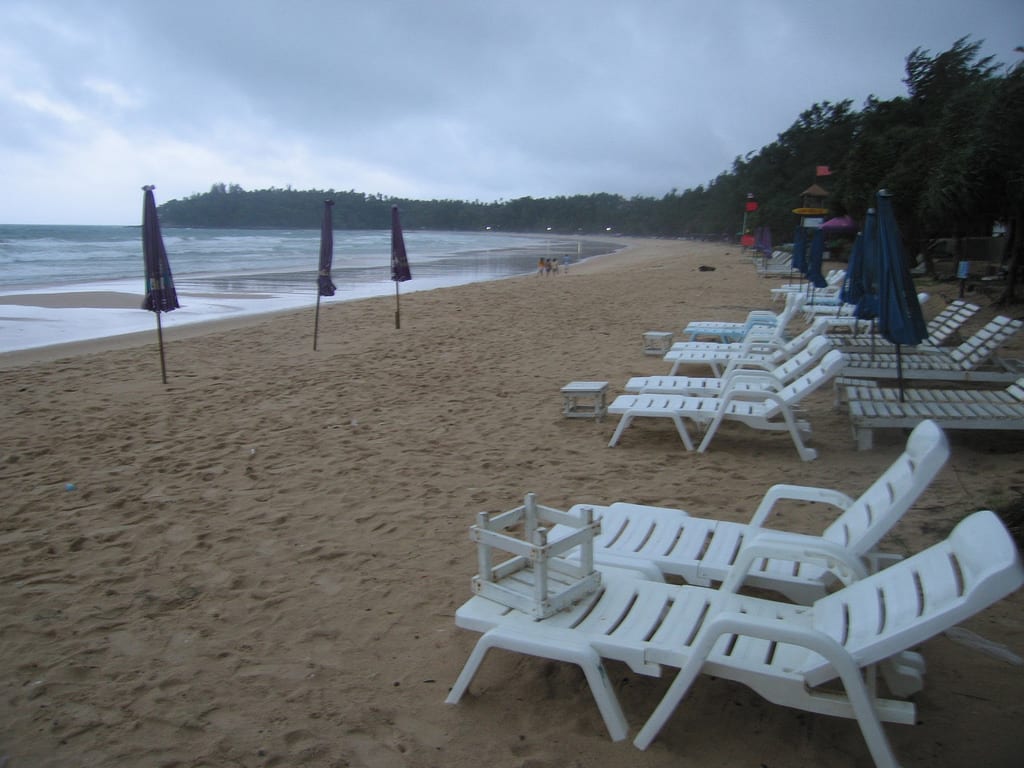Skift Take
Japan turned out to be the lifeboat for Thomas Cook China when Thailand turned disastrous, as the tour operator appears to be sailing away blithely with four new initiatives to scale up its China market.
A steep decline in Chinese arrivals to Thailand has roiled Thomas Cook China’s aim of taking 200,000 clients on holiday by the second year of operation in the mainland. But what it loses in Thailand is made up for by gains in Japan that are more than just about the number of tourists.
The tour operator is also sticking to its end goal of having a China market that’s as big as Europe, marching on with four new initiatives that include launching its own integrated technology system and developing own brand hotels throughout the mainland. Thomas Cook China is a joint venture between the Thomas Cook Group and the Chinese conglomerate Fosun.
Thomas Cook China, of course, isn’t alone in suffering losses to Thailand due to a backlash from Chinese tourists over the Phuket boat tragedy in July and a cooling China economy. Chinese arrivals in Thailand dropped 20 percent in October, the fourth consecutive drop since July, according to the latest data from the Thailand Ministry of Tourism & Sports. For a market that accounts for nearly 30 percent of all arrivals, the declines are disastrous, prompting the Thai government to waive fees for visas on arrival for visitors from 21 countries, including China, for the upcoming peak season in December and January.
The disaster mirrors back to Thomas Cook China, for whom Thailand was a number one destination accounting for 30 percent of business. The majority of its clients are sun-seekers going to Phuket. This is now down to “10 to 20 percent,” Alessandro Dassi, managing director of Thomas Cook China, told Skift. And while sales have picked up this month, they aren’t back to the same level as before, he said.
Had it not been for Thailand, along with a weaker summer for Japan due to heatwaves, typhoons and earthquakes, Dassi said Thomas Cook China would have exceeded its target of 200,000 clients by the financial year ending in September. Instead it carried only 160,000 Chinese passengers, but Dassi pointed out “the target was always an ambitious one and under these circumstances we are very satisfied that we have grown more than eight times (since its official launch in September 2016).”
The Silver Linings Tour Operator Playbook
Despite the weaker summer, Japan is now Thomas Cook China’s top destination with a current run rate of over 1,000 customers per week, said Dassi. Thailand is number two, followed by Turkey, Israel, Morocco, and other Southeast Asian destinations such as Bali, Vietnam, and the Philippines.
The tour operator will open an office in Japan next year to contract hotels and further develop new products for the Chinese market. This comes on top of its big effort this year to create more Japan packages. Historically, Thomas Cook Group hasn’t had much exposure to Japan as its core market is sun and beach, hence there’s nothing that Thomas Cook China could leverage from the parent, unlike with destinations such as Turkey or Morocco, which have long been key destinations for Europeans.
“Japan is seen as safe and appeals to premium, independent Chinese travelers who are our main focus for China,” said Dassi. “Its activities go from winter sports to shopping, food, city sightseeing, attractions, so there are different types of products that we can create for the China market, from the north in Hokkaido, to the south in Okinawa which is more of a sun and beach holiday.”
Does that mean, there goes Thailand? The crisis has again brought up the tiring lesson of the need to diversify. “We’ve been too reliant on Phuket. We are now expanding our portfolio in Thailand, developing a number of packages to Bangkok, which enables us to link to destinations such as Pattaya, Chiangmai and Koh Samui. Here, we can leverage our joint venture with Asian Trails Thailand to get better resources and prices,” said Dassi, referring to a 50-50 joint venture between Thomas Cook Group and one of Thailand’s experienced inbound operators, Asian Trails, to cater to visitors in the kingdom.
“Although Thailand has seen a decrease in volume, it is still important for Chinese travelers, especially when we look at the proximity between it and south China, the Guangdong area, which is probably the number one or two in outbound tourism. Whereas in East China – Shanghai or Hangzhou – Japan is more prevalent because of the proximity to it,” said Dassi.
Another silver lining is that Japan’s packages are pricier than those to Thailand, which means higher revenue for Thomas Cook China. But Dassi said while revenues are of course important, “our matrix for China is increasing the customer base”.
“We want to scale the business, gain marketshare and grow China to be comparable, over time, to the size of our mature markets in Europe. We’re not in China to remain as a small business,” said Dassi.
Four New Initiatives to Scale the Business Further
Although he isn’t able to share targets for next year, four new initiatives may see Thomas Cook scale faster in its third year of operation in China.
The first is its newly launched integrated technology system for China, Silk. The aim is to have 20 to 30 percent of sales to come through its own system while continuing to have a multi-channel strategy by working with online marketplaces such as Fliggy.
Said Dassi: “It’s a very scaleable technology. For example, we are now able to integrate the portfolio of WebBeds, with whom we have a global partnership, into Silk through API, and distribute all these hotels (in the bed bank) to online marketplaces in China such as Fliggy.
“Silk enables us to increase the products in a dynamic and automated way. At the same time, it gives us access to distribution, because Silk is already today integrated into our Fliggy store, mobile websites and our WeChat mini program, which is new for us.
“We evaluated the systems at Thomas Cook Group but in the end decided to build a localized system that is suited for the business in China, which caters to not just traditional packages but different types of components — hotels, tours and activities. We leveraged the IT of one of our major partners, Spring Travel, but now the system has evolved to be completely bespoke to us, owned by Thomas Cook China and maintained by our own in-house team.”
The second initiative is to tap other first-tier cities across China, beginning with Beijing, Guangzhou and Shenzhen. “Today our customer base is concentrated in Shanghai, one reason being a lot of our packages and tours depart from Shanghai. So we will be launching products and doing local marketing to capture those new markets as well as have multiple departures for all these products from these markets. For instance, we’ve launched Beijing and Guangzhou departures for our Morocco tour product, which is our bestseller for a number of months now,” said Dassi.
The third and fourth initiative will see Thomas Cook China turning its focus for the first time to the domestic market which is growing faster in both number of tourists and spending than outbound.
One of its strategies is to develop its own brand hotels, in particular Sunwing and Casa Cook, throughout China.
Thomas Cook Group has long believed in the model of having its own tour operator, travel agency, hotels, airline, believing it results in better control of the experience it can offer to customers. A move to develop its own brand hotels in China not only is in line with that, but just imagine the exposure Thomas Cook China will get with domestic travelers staying at these hotels and their potential to become its next outbound travelers.
A partnership with DreamEast Group, a resort development company in Hong Kong, has produced the first two Sunwing hotels that will open in 2020 in Jiashan, near Shanghai, and in Hengyang, Hunan, near Zhangjiajie where the film, Avatar, was filmed. Both are new-builds.
Thomas Cook China is also in talks with its joint venture partner, Fosun, to develop Sunwing and Casa Cook hotels. It does pure management and does not take equity in hotel development.
“We’ve always wanted to bring our own brand hotels into China. Unlike city hotels, which are saturated, we see tremendous potential in the domestic resort market, for hotels either near city centers to capture weekend or short-break holidays, or in other tourist destinations in China,” said Dassi.
To tap the domestic market, it will also partner provinces in China to promote and develop their destinations, as seen in its tie-up with the Hainan Provincial Tourism Development Commission, signed in July, to attract more international and domestic tourists to sun and beach spot Sanya.
Recently, it opened an office in Sanya. “We will leverage the new office to develop domestic tourism, which has a much bigger potential, as Sanya is already the number one sun & beach destination in China, and also for some inbound services for the European market,” said Dassi.
Looks like in the end, it may be that it is Thomas Cook Group that will leverage the resources of Thomas Cook China, not the other way round, when China grows to be as big, if not bigger, than the European business.
The Daily Newsletter
Our daily coverage of the global travel industry. Written by editors and analysts from across Skift’s brands.
Have a confidential tip for Skift? Get in touch
Tags: japan, thailand, thomas cook group
Photo credit: An empty beach like this one in Phuket in Thailand have become all too common and tourism numbers have dropped off. J Hecking / Visual Hunt


